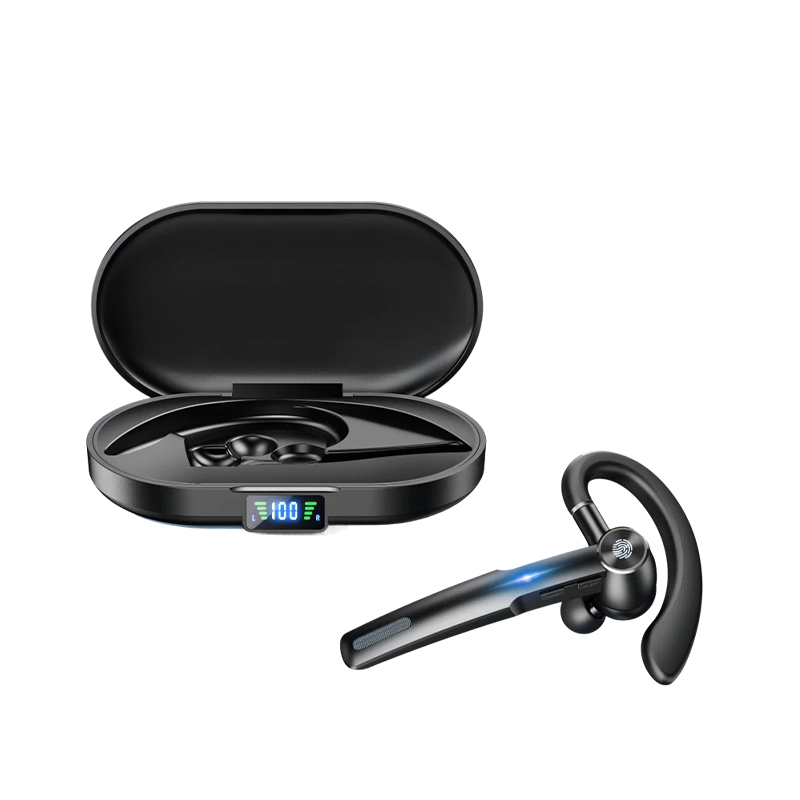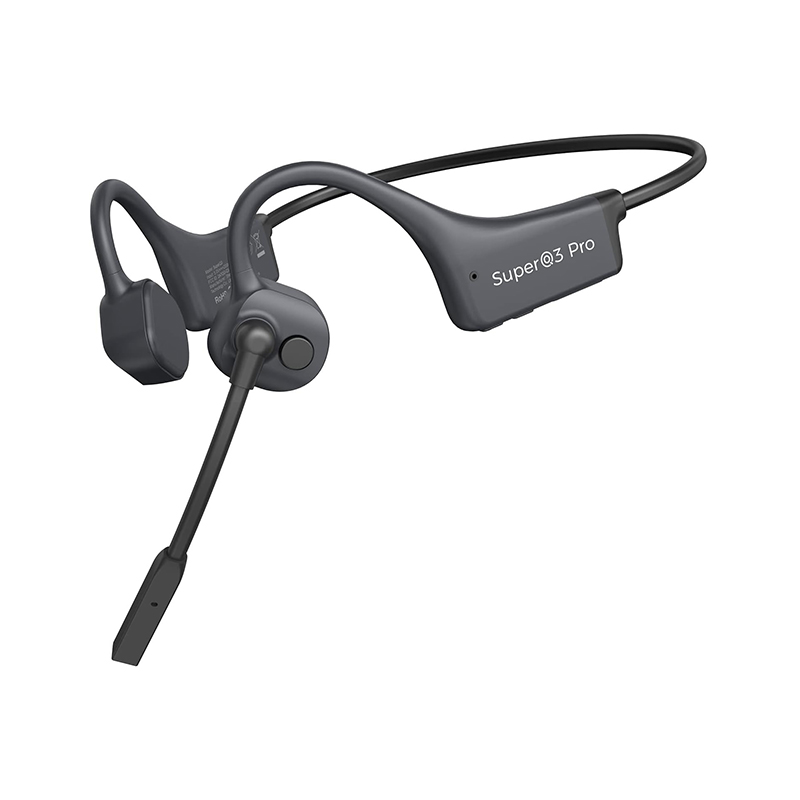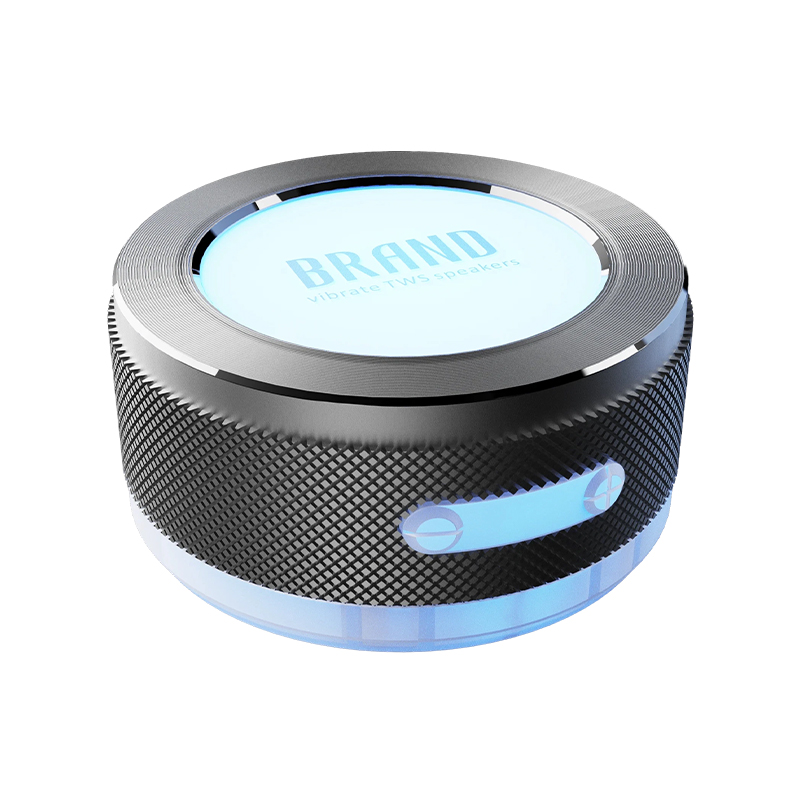How can the vibration sound transmission design of the bone conduction Bluetooth headset ensure clear sound quality without loss while opening the ear canal?
Release Time : 2025-07-16
The vibration sound transmission design of the bone conduction bluetooth headset converts sound into mechanical vibration and transmits it to the auditory nerve, achieving clear sound quality without loss while opening the ear canal. This design gets rid of the closure of the ear canal by the traditional bone conduction bluetooth headset, but can build a unique sound transmission path through the particularity of vibration conduction, balancing openness and sound quality performance.
The precise layout of the vibration unit is the basis for sound quality assurance. These units are usually close to bone-dense areas such as the temporal bone or mastoid, because these parts have higher efficiency in vibration transmission and can transmit vibration more directly to the inner ear. When the vibration is transmitted from the bone to the auditory system, it bypasses the external auditory canal and the eardrum, reducing the energy loss of sound when it propagates in the air. Even if the ear canal is open, the core sound quality information can be efficiently transmitted through the bones to avoid distortion caused by sound diffusion.
The optimization of vibration frequency allows sounds of different frequency bands to be clearly presented. The vibration amplitude of low-frequency sound is large and is easily transmitted through the bones; while the vibration of high-frequency sound is more subtle, requiring the vibration unit to have precise frequency response capabilities. The vibration unit will be adjusted in the design to maintain sufficient amplitude to ensure a sense of heaviness when transmitting low frequencies, and to ensure clear details through concentrated output of high-frequency vibration when transmitting high frequencies, so as to avoid the loss of high frequencies due to vibration dispersion, so that the sound in the open ear canal is still clearly layered.
The preprocessing technology of sound signals reduces the inherent defects of vibration conduction. The bone conduction method itself may cause the attenuation of some intermediate-frequency sounds. Designers will enhance the intermediate-frequency signals through audio algorithms to make up for the losses in the conduction process. At the same time, the algorithm will perform noise reduction processing on the sound signal, filter out the noise generated by the mechanical movement of the vibration unit itself, and make the vibration signal transmitted to the bones purer. Even in an open environment, it can highlight the core elements of human voice and music and ensure clarity.
The damping control of the vibration unit avoids the interference of excess vibration. If the vibration is too intense, overtones or resonance may be generated, affecting the purity of the sound quality. In the design, special damping materials will be used to absorb the excess vibration generated by the vibration unit during operation, so that the effective vibration is more focused on the transmission of sound frequencies and the noise caused by irrelevant vibrations is reduced. This precise damping control allows the sound in the open ear canal to remain clean and not become turbid due to vibration diffusion.
The coordinated adaptation with the auditory system reduces the loss of sound quality. The human skull has different sensitivities to vibrations of different frequencies. The design will adjust the vibration mode of the vibration unit according to the acoustic characteristics of the skull to match the resonant frequency of the skull. When the vibration frequency is close to the natural resonant frequency of the skull, the sound transmission efficiency will be significantly improved, and even weaker vibrations can be clearly perceived, thereby ensuring the integrity of the sound quality without relying on the closed ear canal to enhance the volume.
The structure of the open ear canal reduces some sound quality interference. The traditional closed ear canal bone conduction bluetooth headset may cause sound distortion due to the standing wave effect in the ear canal, but the open design of the bone conduction bone conduction bluetooth headset avoids this problem. Vibration is transmitted directly through bones, and the sound is processed more directly in the auditory system, which will not be affected by the resonance of air in the ear canal, especially in the low-frequency part, which can reduce the feeling of stuffiness in a closed environment, make the sound more natural and transparent, and maintain a clear sense of hearing even in an open state.
In addition, the directional control of vibration sound transmission makes the sound more concentrated. The vibration range of the vibration unit is limited to a specific area, reducing the radiation of sound waves to the surrounding air, which not only avoids the leakage of sound to interfere with others, but also allows more energy to be used for bone conduction. This concentrated use of energy ensures that in the case of an open ear canal, sufficient sound energy can be transmitted to the auditory nerve, ensuring that the sound quality will not be excessively lost due to opening, and achieving a balance between openness and clarity.
Through the design of vibration unit layout, frequency optimization, signal processing, damping control, coordinated adaptation, interference reduction and energy concentration, the vibration sound transmission design of the bone conduction bluetooth headset successfully ensures the clarity and integrity of the sound quality while opening the ear canal, providing users with a unique auditory experience.







